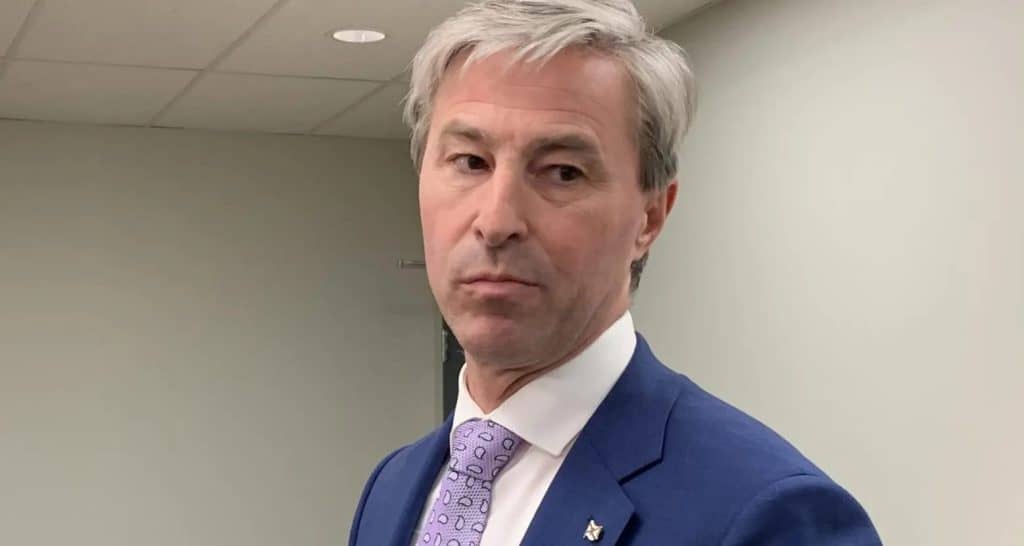
I have no doubt that Tim Houston genuinely wants to “fix” health care. He ran a provincial election campaign fixated on that singular if inexact goal. He has staked his political future, even his ultimate place in Nova Scotia political history on the claim that he alone can make health care healthy again.
So why has everything continued to go wrong, and even gotten worse during his first year and a half as premier?
Some of it was inevitable, of course, the over-expectations Candidate Houston raised to the skies smacking up against the hope-crushing lived realities Premier Houston must face back down on the ground.
And given the myriad realities of an over-burdened, under-resourced health care mess that has been decades in the unravelling, even his modest successes — and there have been some — are almost always going to be buried under the latest dismal dispatches.
But there is, it seems to me, more to what’s gone wrong than just that.
Start with Houston’s own top-down approach to problem-solving, epitomized by his government’s Day 1 firing of the province’s experienced health authority CEO and entire board, replacing them “temporarily” with his own sole, smart, loyal but health care-experience-free political fixer.
“A reset,” he called it.
Rinse and repeat, others might suggest.
Another example: this month’s “go like hell” health care leaders’ summit to respond to an immediate crisis at provincial emergency departments. Although the government said the gathering of senior health care bureaucrats with “health care partners” — “every college, the unions, the schools, the associations…” — had been in the works for weeks, no one could forget that it came on the heels of two highly publicized Christmas holiday tragedies in which women had gone to their local emergency departments seeking help and ended up dead instead.
The closed-door summit was presided over and pronounced upon by the premier himself. “It was good to have everyone in the same room,” he told the CBC’s Amy Smith.
Well, not quite everyone.
Leaders… closed door… premier pronounced… Are we sensing a pattern here?
According to my colleague, Jennifer Henderson, the premier’s public briefing on what was said in the private summit “contained a large dose of cheerleading.”
That summit was followed the very next day by an over-hyped announcement from Health Minister Michelle Thompson and Nova Scotia Health CEO Karen Oldfield (yes, that year-and-a-half-and-counting “temporary” CEO). They promised a multi-pronged multi-million-dollar grab bag of reforms — “quicker ambulance response times, specialized doctor-led teams to triage patients arriving at ERs, virtual care for patients clogging ERs with non-emergencies and real-time data on where to find hospital beds” — all designed to make our emergency rooms function the way they’re supposed to again.
Most were good ideas — patient advocates keeping ER patients informed of their status while they wait — but the often tripped over other realities the announcers probably should have known about.
So, the announcements were followed — just as inevitably — by the day-after-that responses from those whose important voices hadn’t been heard at the leaders’ closed-door summit, or whose suggestions/cautions/caveats had been ignored in the premier’s go-like-hell exhortation to everyone to “just go, just get going to get this fixed.”
For example, 39 doctors from the Halifax Infirmary, “the province’s largest and busiest ER,” signed an open letter to the premier. While they were “enthusiastic about the government’s commitment to addressing this issue,” they wrote, “we worry the proposed solutions won’t address the problem.”
Boom.
That problem — glossed past in the government’s reform measures — is that there simply aren’t enough hospital beds available for those who need them. “Care from a nurse, nurse practitioner, physician assistant or doctor all requires an actual, private space for the patient,” explained their letter. “Our emergency departments are so filled with admitted patients that these beds are simply not available.”
Dr. Lorri Beatty, one of the doctors who signed the letter, told CTV News that on some days 95% of the Halifax Infirmary emergency department’s beds are filled with patients who have already been admitted to hospital, but can’t be moved to beds elsewhere. “That leaves us with only a couple of beds for the 200-plus people coming in through the waiting room and via (ambulance).”
That does not compute.
Maybe it’s time to think outside one box and into some others. What if we turned the under-used, over-subsidized Halifax Convention Centre into a health care facility?
But I digress.
It isn’t just rooms that are lacking, of course.
Nova Scotia Nurses’ Union President Janet Hazelton, who was one of the “everyone in the same room” with the premier two days earlier, made the point that the government’s announced plans didn’t address — and might even exacerbate — the “staggering” vacancy rate among nurses, putting even more “untenable” pressure on those that remain.
“We can get patients to emergency faster, we can get more ambulances on the road, but if we don’t have professional staff and beds on the other side of the waiting room, wait times will not be reduced.”
The Nova Scotia Government Employees Union, which represents nurses at the Halifax Infirmary and was also among those organizations listened to but not heard during the premier’s cheerlead-a-thon summit, also warned that the government’s bandaid schemes are only making the nursing shortage worse.
Thanks to its decision to contract “travel nurses” — nurses who work for private agencies — to temporarily fill 1,500 vacant positions by paying them much higher wages and with better working conditions than offered to those currently working in the system, regular hospital nurses are quitting for more money and the freedom to choose their hours.
Staff nurses are then “working side by side with travel nurses, and the travel nurses are getting paid a great deal more money, in some cases double,” reported NSGEU vice president Hugh Gillis. “So, what does that do for morale?”
And how does creating a two-tier nursing system solve the nursing shortage?
Why not shovel the money the government is now paying to contract out nursing services — including no doubt big bucks to the private companies that oversee those contracts — to pay significant bonuses to the nurses now doing the jobs so we can retain them into the future?
The problem is that Tim Houston still seems to see our health care crisis from the top down.
Perhaps instead of bringing together health care leaders for yet another behind-closed-doors summit, Houston should spend a week or two as a fly on the wall at provincial emergency rooms seeing what happens for himself and then make time for some quality listening time in the cafeteria asking those on the front lines what will really help them — and us.
Time for some bottom-up thinking?
***
Oh, and one more thing. The legislature’s Health committee — Houston government-controlled — last week turned down a request from the NDP to have Health Minister Michelle Thompson and Health Authority CEO Karen Oldfield appear before the committee as witnesses to answer questions about the current ER and healthcare crises.
Surprised? I thought not.
***
A version of this column originally appeared in the Halifax Examiner.
To read the latest column, please subscribe.




 STEPHEN KIMBER, a Professor of Journalism at the University of King's College in Halifax and co-founder of its MFA in Creative Nonfiction Program, is an award-winning writer, editor and broadcaster. He is the author of two novels and eight non-fiction books. Buy his books
STEPHEN KIMBER, a Professor of Journalism at the University of King's College in Halifax and co-founder of its MFA in Creative Nonfiction Program, is an award-winning writer, editor and broadcaster. He is the author of two novels and eight non-fiction books. Buy his books